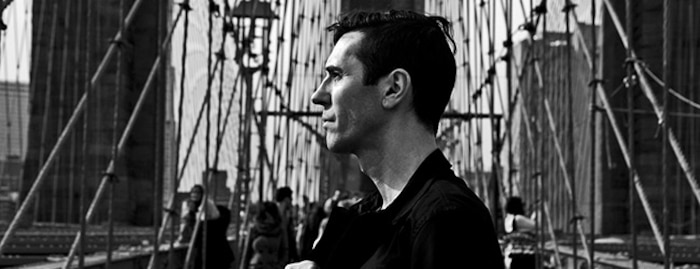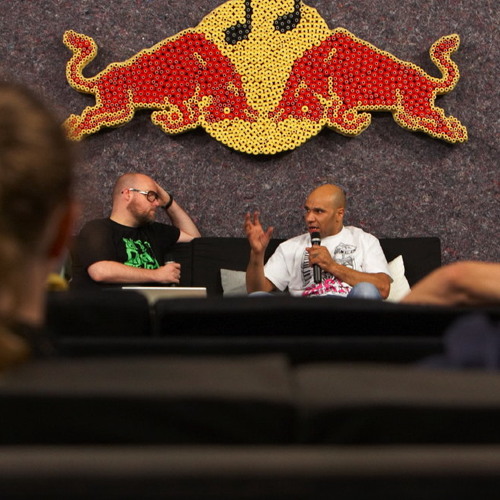Interview: Eskimo Noise’s Bevin Denton on Doing Sound For Metalheadz at Blue Note
We catch up with one of the sound architects behind the iconic drum & bass night.

Bevin Denton was one of the team behind the legendary Eskimo Noise sound which, famously, provided the install for the Metalheadz Sunday Sessions at the Blue Note. Here he recalls how that association came about and how the team tackled the demands of venue and label to create a truly unique experience.
Thinking back to the very beginning, at what stage did you come to be involved in Eskimo Noise and how?
I joined Eskimo Noise in around 1991. At the time we were supplying systems for raves like World Dance, Moondance and many of the other big parties, with the exception of Energy and Sunrise. We also had installs in most of the big London clubs.
Was your background in sound engineering? And what music were you yourself most into when you joined?
I wasn’t a sound engineer. I was a telephone engineer and I was based in London, Battersea, I always have lived in London. Musically speaking I was a reggae head. That went on to hip hop, and then in 1989 I discovered acid house and started going to raves. I was going everywhere it was possible to go to listen to that music. It was a very different phenomenon to anything that had existed before. That got me into dance music.
And what kind of musical background did the rest of the Eskimo Noise team come from?
We were known bass kings at that time. We prided ourselves on our ability to cater for dance music and we were all ravers so we knew what we wanted to hear.
Neil [Johannessen] was the boss. We were the workers. The reasons we did things like World Dance was because they were his mates. They were all friends and we got a reputation from doing those parties. The team to begin with was made up of five of us. When I joined I was a DJ. I was DJing techno and Troy (another member of the team) was a techno head so we had shared musical interests. I used to be a resident at parties like Hellraiser, Dead By Dawn, What Planet Are We On and I would play alongside DJ Hell, Traffic, Meinhof, Warlock, Colin Dale and Colin Faver when they were playing real hard techno. Back in the day the police wouldn’t allow anything to go in South London so the parties would mainly be in North. Paradise Club, which is where AWOL used to happen, was a major place for me to go, and Eskimo had a sound install in there.
When you joined Eskimo Noise what were the parties you were working on?
One of my first ever entries into Eskimo Noise was helping them set up at the Blue Note for the Metalheadz Sunday Sessions. At the time we had an install in the Paradise Club, we had an install in SW1, which is now Pacha, we had an install in Strawberry Sundays, which was in Vauxhall and a few other others. They were baby systems. The Rampage stage at Notting Hill Carnival was also our rig. We had a whole square to ourselves there.
Technically speaking, what were the systems made up of?
We favoured the Nexo systems, driven by Crown Amps. Our main system, the one we used at Rampage, was a Nexo Alpha system. That consisted of Nexo S2 subs, they were double 18”s in a loaded box, with B1s, which were front loaded 18”s. M3s and M4s made up the top end. The reason for the M3s and the M4s was for dispersion. That was the Rampage system. It just so happened that everyone else at the time was using Turbo Sound rigs and Neil (Johannessen) wanted to go for a different option. It worked for us.
How did the Metalheadz affiliation come about?
Goldie didn’t like the sound that he was getting in the Blue Note. They had a Turbo Sound rig in there, which was the company that Tony Andrews later left to set up Funktion-One. We were known bass kings at that time. We prided ourselves on our ability to cater for dance music and we were all ravers so we knew what we wanted to hear. Goldie came to us and said he needed a sound in the Blue Note, based mainly on our reputation, but we also knew some of the DJs from outside Metalheadz.
Were there any decisions you took specifically about how to tackle Blue Note?
We had to decide what power we were trying to push in there. Goldie wanted a full sound, a sound that brought out the bass. We put in enough kit to suffice that and it meant there was a lot of kit in there. We’d always arrive there a couple of hours before the doors opened to set up.
What kind of challenges did the odd shape of the venue present?
With the way that resonance goes, if you point speakers at your decks they will jump. So we threw down the room. You’d have to walk down into the dance floor and the first set of speakers were at the bottom. You had another stack around twenty paces away. And then just past the DJ booth you had another two facing out. We used to have to devise little tricks to solve the resonance, like getting into the club and grabbing the rubber mats off the bar to put the decks on. At another stage we had hollow round disks to which we strapped a lot of elastic bands to decouple the decks from the room.
Do you think the sound influenced the music that DJs were playing in there, as some have suggested?
If it wasn’t for the vibe and the way it sounded, I would have stayed in my bed.
Dillinja was the man at the time, and hearing his tunes always made sense on that system. Goldie’s tunes, Doc Scott, all of them were doing great things for music at the time. It has set the trend for where things are at now. I especially used to look forward to hearing Randall. His mixing, his choice of music, the way he played it. Even though he’s doing a different thing now. He could mix. He was a master. Another person I used to enjoy listening to was Clarky.
And did you have a chance to engage with the music yourself?
Although I was working, I was raving as well. I would be working Friday night and Saturday at SW1. That would finish at 6 in the morning and I’d get three hours sleep then go straight to the warehouse. If it wasn’t for the vibe and the way it sounded, I would have stayed in my bed.
How about the MCs who were a part of the night, what difference do you think they made?
Moose, Cleveland Watkiss and Fats were all residents at the club. All of them knew when to say something and when not to. If music was music and it was running, they would let it run and not say too much. It wasn’t about MCs at Metalheadz, but it was – if that makes sense. MCs enhanced what was going on. They weren’t taking over the music. The music was key. It was an adult crowd. It was people who really really, really appreciated the music. It wasn’t about taking drugs. It was about going to “school” and hearing tracks that you just thought, “Wow, this track is absolutely amazing.” You’d always come out of there buzzing. I was working and I’d come out of there with a buzz.

This feature is part of a week of articles guest curated by 3024 label boss Martyn.
“Going to the Blue Note was the first time that I really heard a sound system. Before that I played at illegal parties and things like that, but that was basically just speakers, where someone would just come in in a little van, put the speakers there, connect everything to the power and that was it. The fact that there was a real science to it… yeah, it was the Blue Note where I first saw that.
I think the night started at 7:00 PM on Sundays, but the upstairs entrance area – where there was also food and things like that – was open before that. A lot of people would gather before the actual night would start. I remember going downstairs, and I just took a little peek into the room which was empty. There was just the guy from the sound system fine-tuning everything, like a doctor sort of examining the room.”
To check out more of the features that Martyn picked out, check out his guest curator hub page.
Header image - Gus Coral

